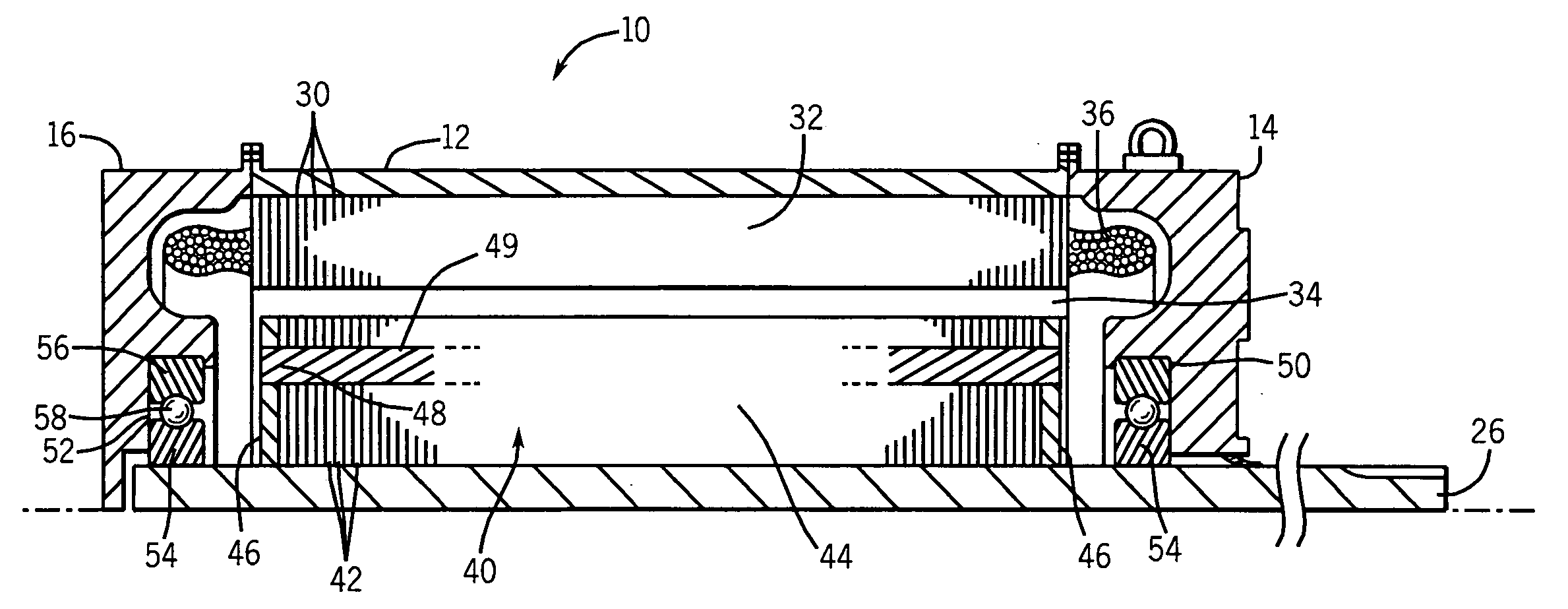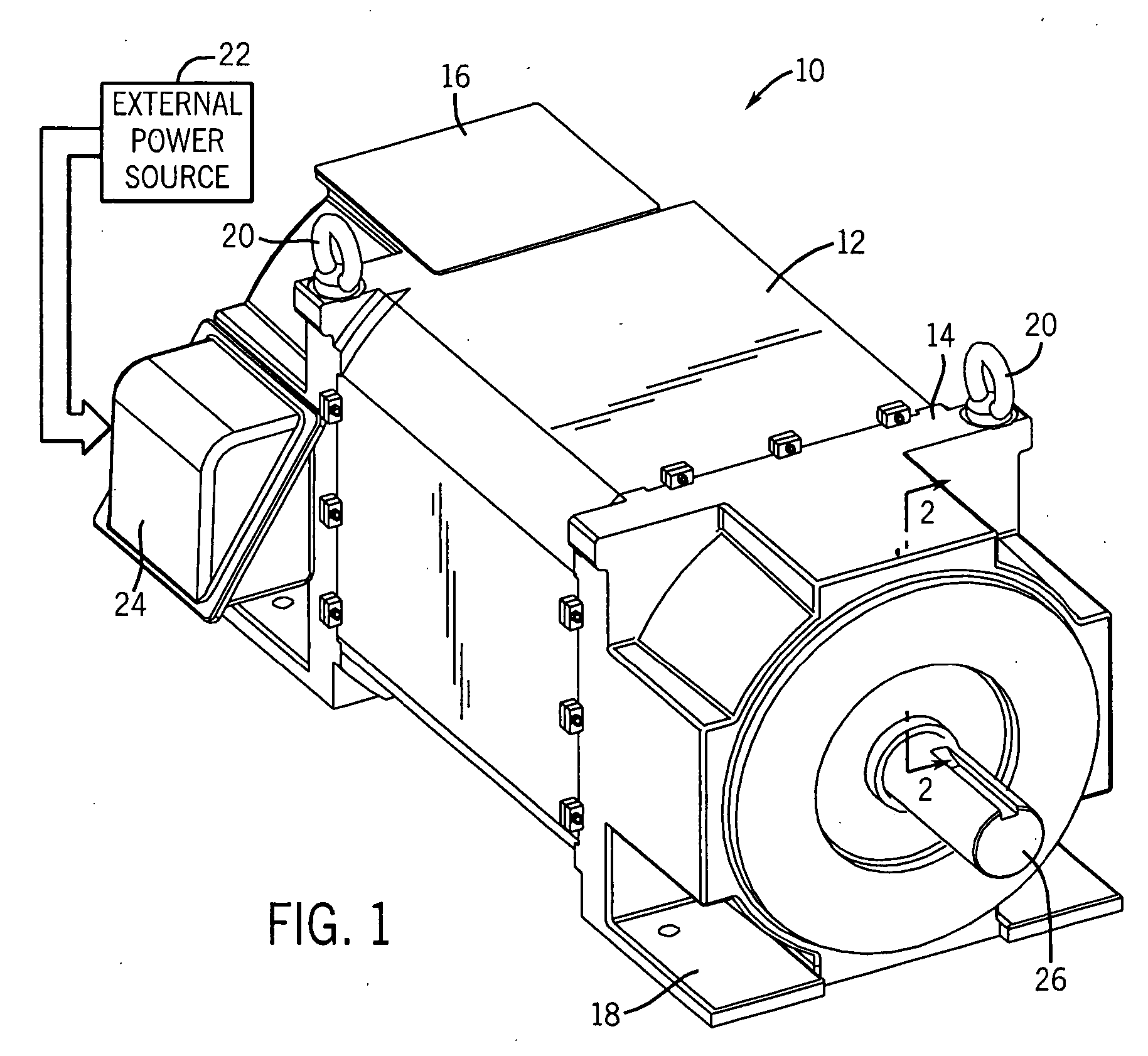Electric motor having different stator lamination and rotor lamination constructions
a technology of stator lamination and electric motor, which is applied in the direction of magnetic circuits characterised by magnetic materials, magnetic circuit shapes/forms/constructions, magnetic circuit rotating parts, etc., can solve the problems of motor failure, negative impact on motor efficiency, and lessen the performance of motors, so as to reduce core loss, improve motor efficiency, and good mechanical properties
- Summary
- Abstract
- Description
- Claims
- Application Information
AI Technical Summary
Benefits of technology
Problems solved by technology
Method used
Image
Examples
Embodiment Construction
[0018] As discussed in detail below, embodiments of the present technique provide apparatus and methods for motors and motor construction as well as generators and generator construction. Although the following discussion focuses on high-speed induction motors, the present technique also affords benefits to a wide variety of electric machines. For example, the present technique affords benefits to induction devices, wound rotors and generators, permanent magnet (PM) devices, to name but a few machines. Accordingly, the following discussion provides exemplary embodiments of the present technique and, as such, should not be viewed as limiting the appended claims to the embodiments described.
[0019] As a preliminary matter, the definition of the term “or” for the purposes of the following discussion and the appended claims is intended to be an inclusive “or.” That is, the term “or” is not intended to differentiate between two mutually exclusive alternatives. Rather, the term “or” when ...
PUM
 Login to View More
Login to View More Abstract
Description
Claims
Application Information
 Login to View More
Login to View More - R&D
- Intellectual Property
- Life Sciences
- Materials
- Tech Scout
- Unparalleled Data Quality
- Higher Quality Content
- 60% Fewer Hallucinations
Browse by: Latest US Patents, China's latest patents, Technical Efficacy Thesaurus, Application Domain, Technology Topic, Popular Technical Reports.
© 2025 PatSnap. All rights reserved.Legal|Privacy policy|Modern Slavery Act Transparency Statement|Sitemap|About US| Contact US: help@patsnap.com



